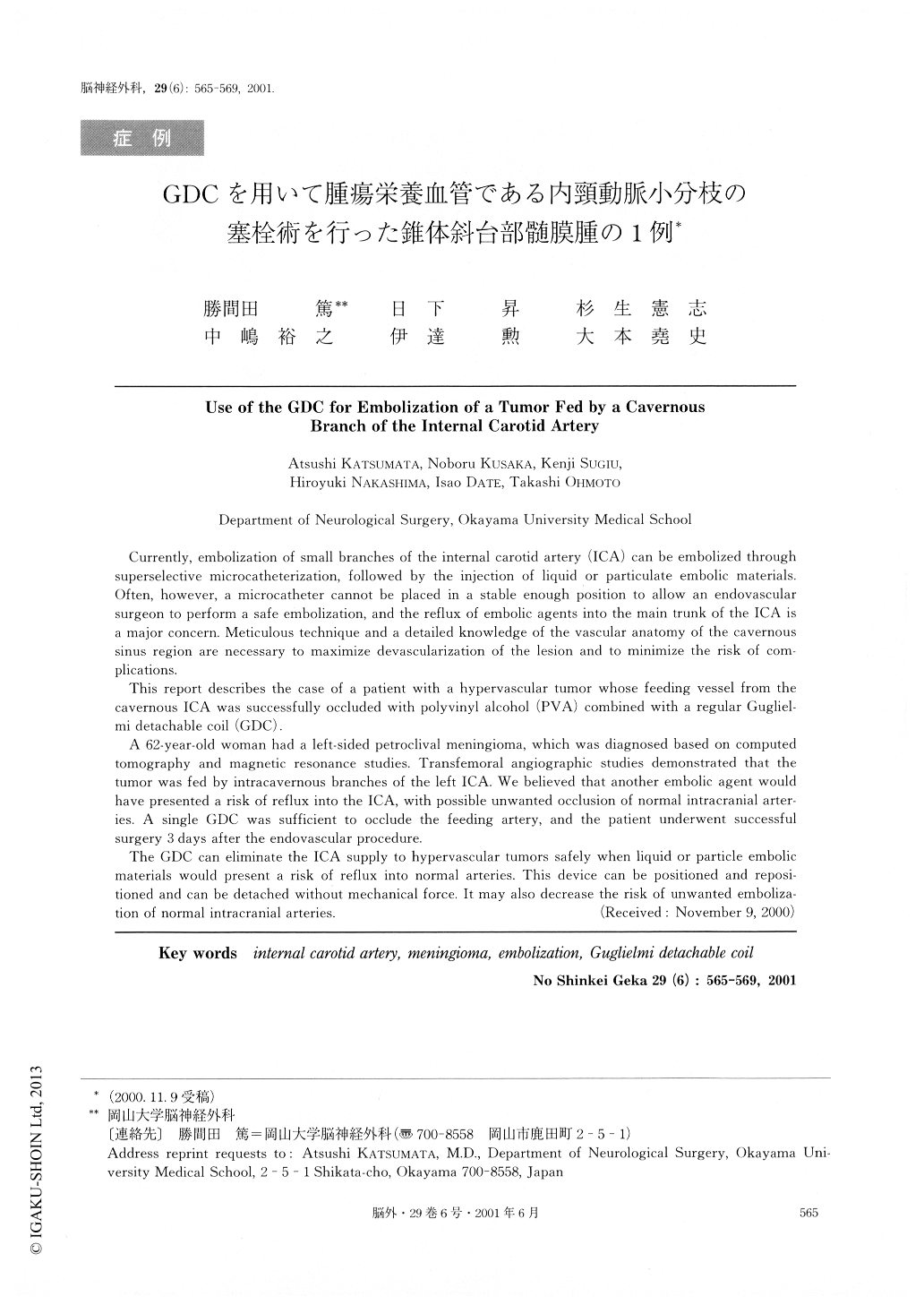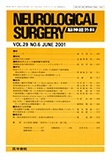Japanese
English
- 有料閲覧
- Abstract 文献概要
- 1ページ目 Look Inside
I.はじめに
海綿静脈洞部や頭蓋底部の髄膜腫,海綿状血管腫(髄外),頸静脈グロムス腫瘍等の血管成分の豊富な腫瘍はしばしば内頸動脈の硬膜枝や海綿静脈洞分枝により栄養されている12).このような腫瘍の摘出術に際しては,しばしば大量の出血を伴うため,術前塞栓術を行うことにより出血量を減じ,ひいては手術操作が容易になることはよく知られている11,12).しかし,実際にはこれらの腫瘍の栄養動脈は細い上に屈曲蛇行していることが多く,マイクロカテーテルの操入が困難とされている.またカテーテルの挿入ができたとしても,逆流によって内頸動脈主幹に塞栓物質が迷入する危険性もある2,11).Guglielmiはこれらの分枝に対する新たな塞栓物質としてGuglielmi detachablecoil(GDC)を改良して作成されたGDC crescentを報告している4).このシステムは安全に上記のような分枝を塞栓できるものであるが,現時点では市販化されていない.本稿では,既存のGDCを用いて腫瘍の栄養血管である内頸動脈小分枝の術前塞栓術を行い,有効な塞栓結果を得た錐体斜台部髄膜腫の1例を報告する.
Currently, embolization of small branches of the internal carotid artery (ICA) can be embolized throughsuperselective microcatheterization, followed by the injection of liquid or particulate embolic materials.Often, however, a microcatheter cannot be placed in a stable enough position to allow an endovascularsurgeon to perform a safe embolization, and the reflux of embolic agents into the main trunk of the ICA isa major concern. Meticulous technique and a detailed knowledge of the vascular anatomy of the cavernoussinus region are necessary to maximize devascularization of the lesion and to minimize the risk of com-plications.
This report describes the case of a patient with a hypervascular tumor whose feeding vessel from thecavernous ICA was successfully occluded with polyvinyl alcohol (PVA) combined with a regular Gugliel-mi detachable coil (GDC).
A 62-year-old woman had a left-sided petroclival meningioma, which was diagnosed based on computedtomography and magnetic resonance studies. Transfemoral angiographic studies demonstrated that thetumor was fed by intracavernous branches of the left ICA. We believed that another embolic agent wouldhave presented a risk of reflux into the ICA, with possible unwanted occlusion of normal intracranial arter-ies. A single GDC was sufficient to occlude the feeding artery, and the patient underwent successfulsurgery 3 days after the endovascular procedure.
The GDC can eliminate the ICA supply to hypervascular tumors safely when liquid or particle embolicmaterials would present a risk of reflux into normal arteries. This device can he positioned and reposi-tioned and can be detached without mechanical force. It may also decrease the risk of unwanted emboliza-tion of normal intracranial arteries.

Copyright © 2001, Igaku-Shoin Ltd. All rights reserved.


